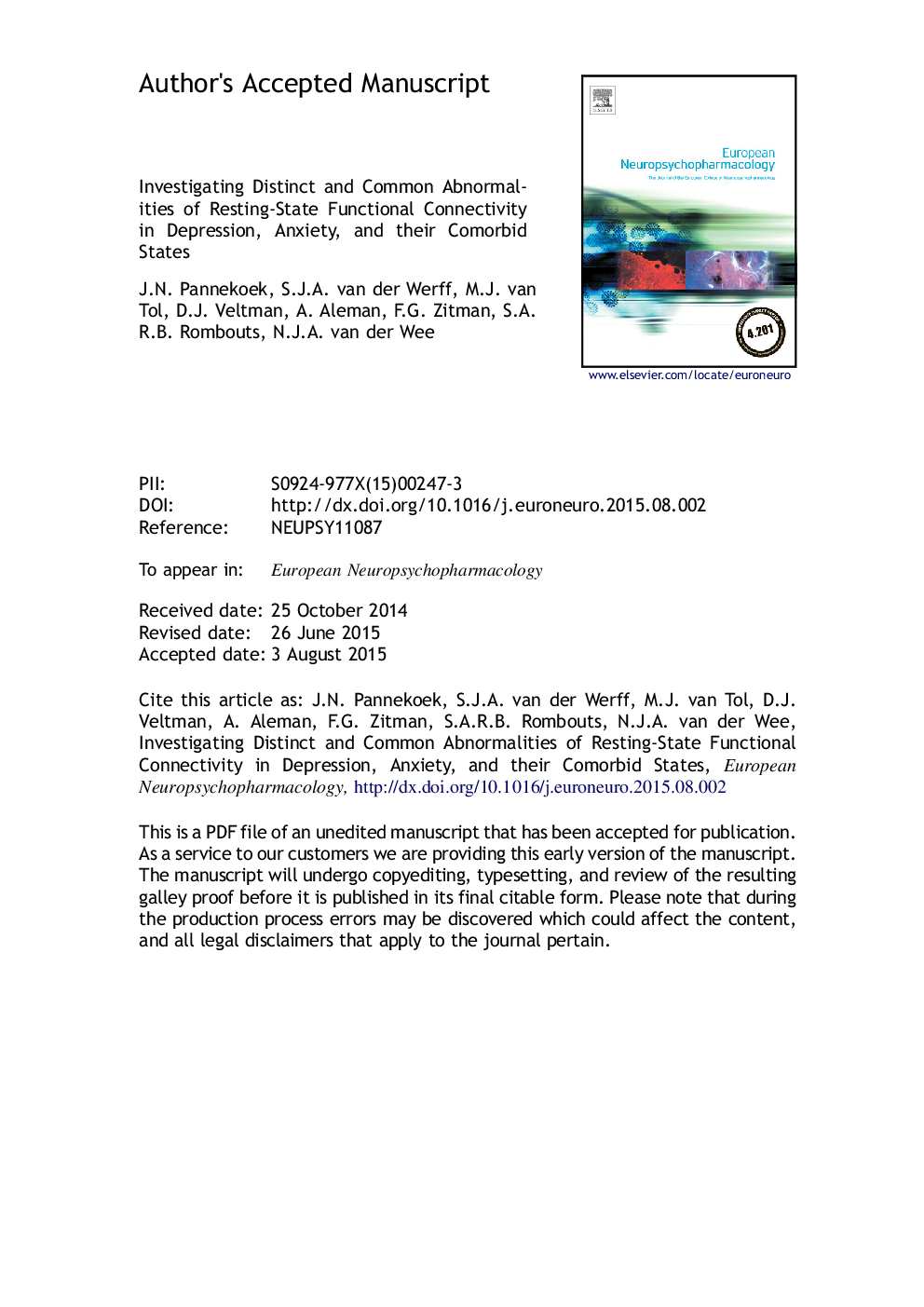| Article ID | Journal | Published Year | Pages | File Type |
|---|---|---|---|---|
| 10298816 | European Neuropsychopharmacology | 2015 | 27 Pages |
Abstract
Depression and anxiety disorders are highly comorbid and share neurobiological characteristics. However, this is usually not explicitly addressed in studies on intrinsic brain functioning in these disorders. Contrary to previous resting-state reports on small, monodiagnostic subsets of the current sample, we investigated resting-state functional connectivity (RSFC) in medication-free patients with depression, anxiety, comorbid depression and anxiety, and a healthy control group. RSFC was investigated in 140 medication-free subjects: 37 major depressive disorder patients (MDD), 30 patients with one or more anxiety disorders (ANX), 25 patients with MDD and one or more anxiety disorders (COM), and 48 healthy controls (HC). RSFC networks were calculated using a probabilistic independent component analysis. Using a dual regression approach, individuals׳ timecourses were extracted and regressed to obtain subjects-specific spatial maps, which were used for group comparisons in four networks of interest (limbic, default mode, salience and sensory-motor networks). When compared to HC, the COM group showed increased RSFC of the limbic network with a cluster containing the bilateral precuneus, intracalcarine cortex, lingual gyrus, and posterior cingulate, and with a cluster including the right precentral gyrus, inferior frontal gyrus, and middle frontal gyrus. This effect was specific for comorbid depression and anxiety. No abnormal RSFC of other networks or in the MDD and ANX groups was observed. No association was found between strength of RSFC and symptom severity. These results indicate that altered RSFC of cortical regions with a limbic network could be specific for comorbid depression and anxiety.
Related Topics
Life Sciences
Neuroscience
Biological Psychiatry
Authors
J.N. Pannekoek, S.J.A. van der Werff, M.J. van Tol, D.J. Veltman, A. Aleman, F.G. Zitman, S.A.R.B. Rombouts, N.J.A. van der Wee,
